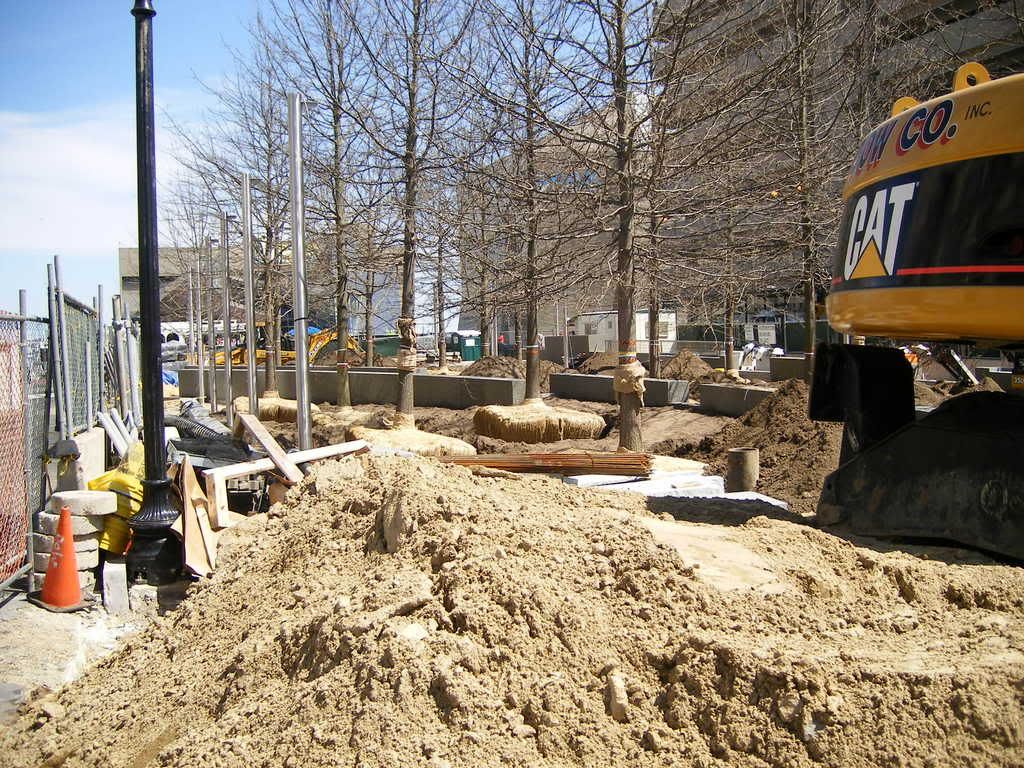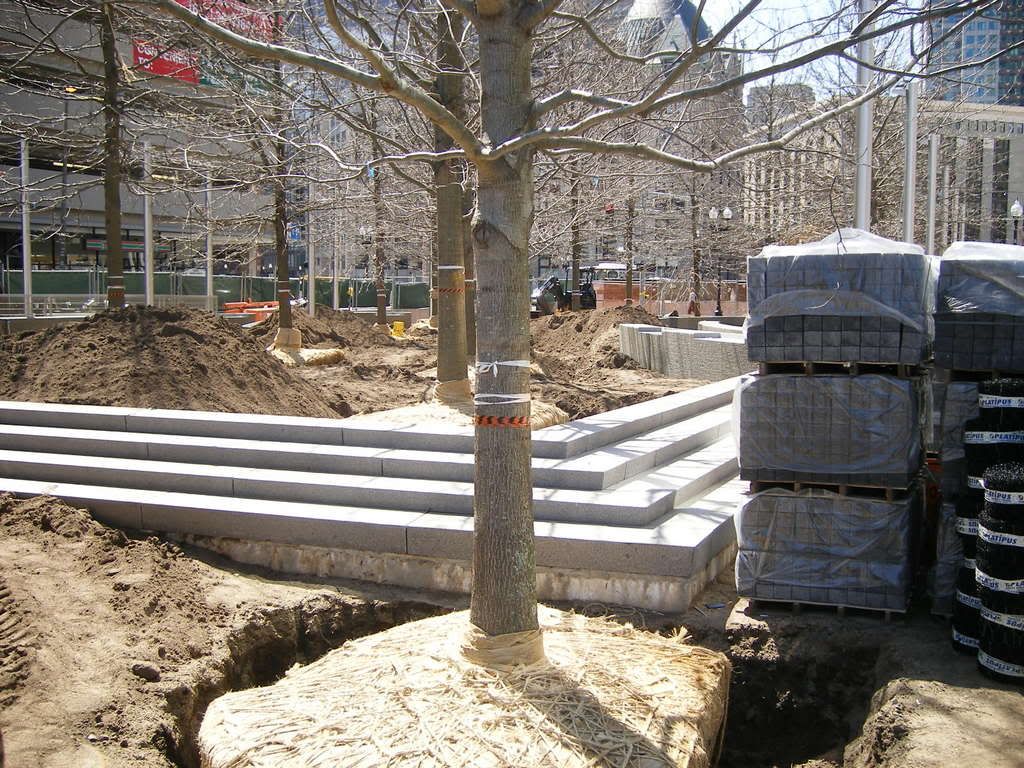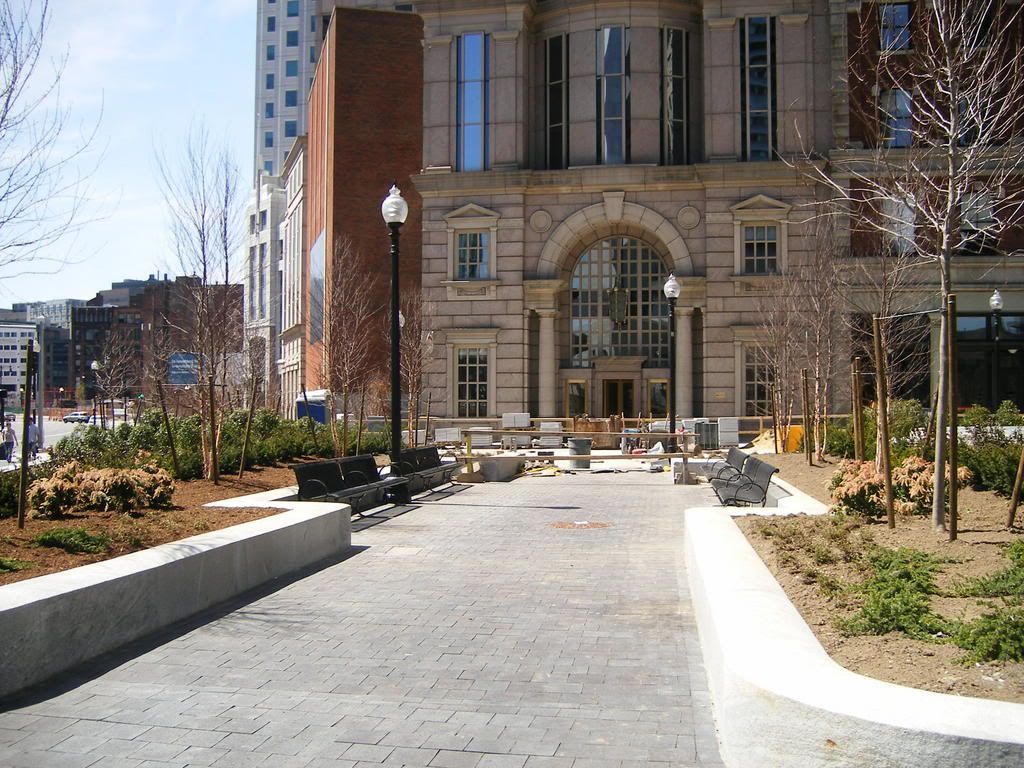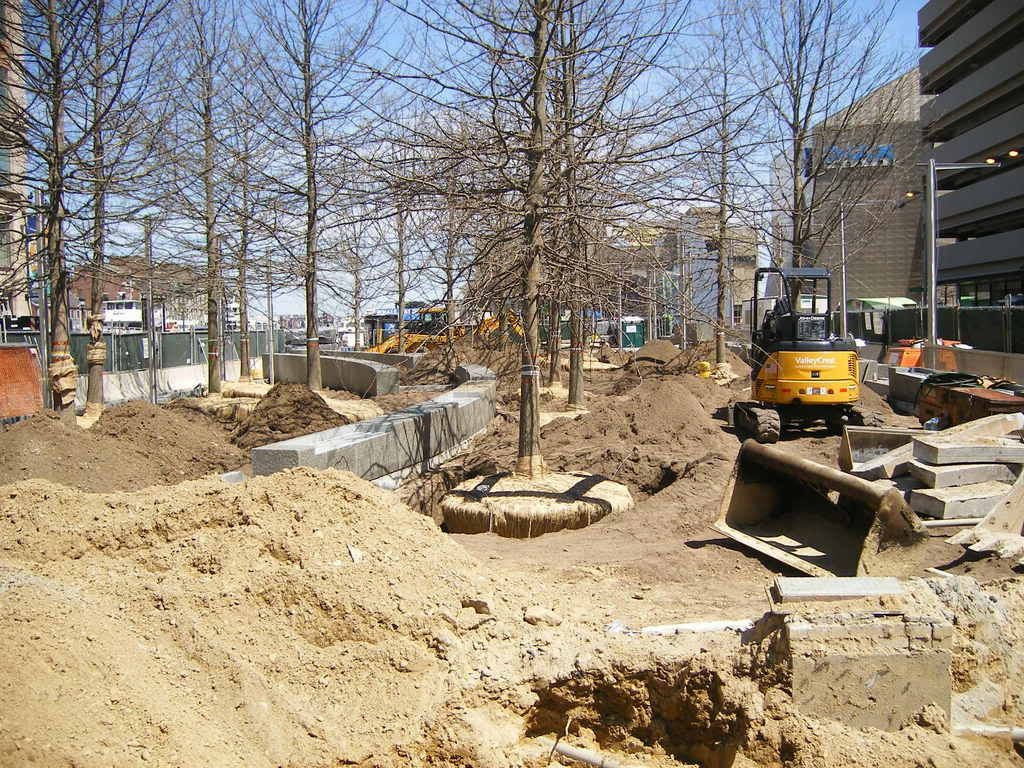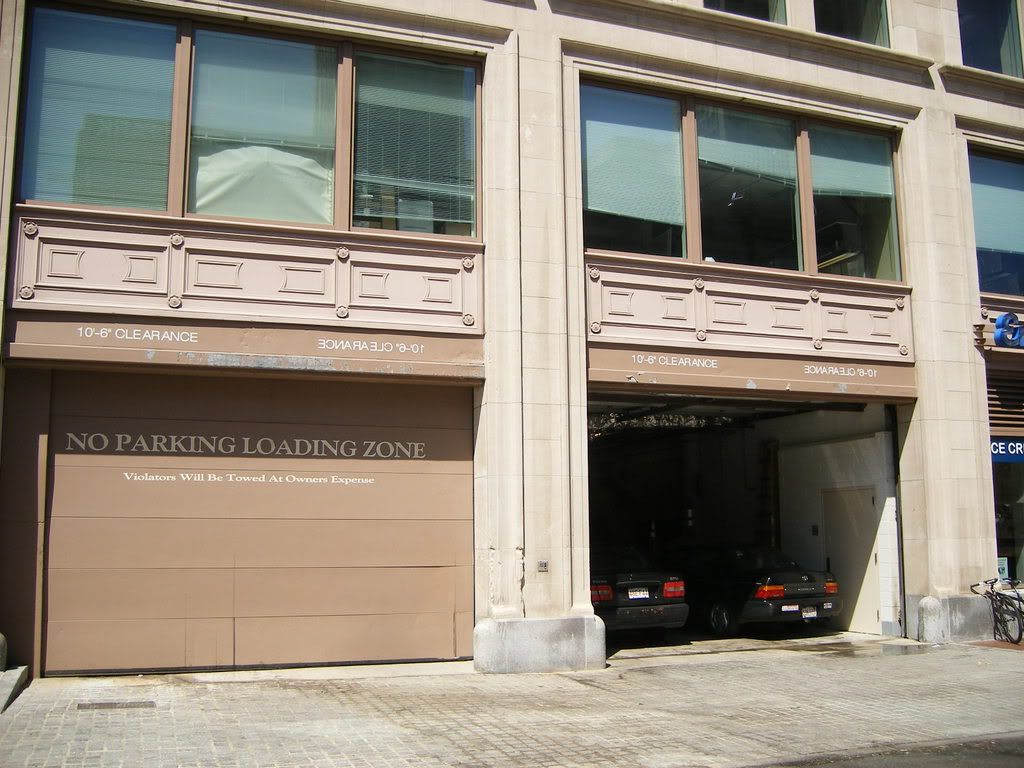Hope springs on Greenway
By Brian McGrory, Globe Columnist | April 15, 2007
Remind me never to go on a walk with Peter Meade again.
My goal was to do a nice, simple hatchet job on the Greenway, along with anyone who has ever had anything to do with this absolute disgrace. You remember the Greenway. The Massachusetts Turnpike Authority used to publish artist renderings of children riding carousels, families frolicking among fountains, couples picnicking on manicured lawns.
These days, drive down Atlantic Avenue, and what you get is block after miserable block of chain-link fences protecting dirt-filled lots. The newspapers are filled with stories of finger-pointing politicians and commissions, task forces, and authorities that can't get anything right.
Enter Meade, that rare Boston power broker with no known enemies. He's the chairman of a group called the Rose Fitzgerald Kennedy Greenway Conservancy, which, best as I can tell, has no legal authority to do anything, but is doing it very well.
For the moment, he is accompanying me on this tour, sharing none of my gloom. Not one minute into our trip, he sweeps his hand across a vista of rubble and metal and proclaims, "Pretty soon, we're going to have buds on all these trees."
Nearing South Station, I see chain-link fence and a dusty piece of land where the Massachusetts Horticultural Society failed to build. Meade sees three blocks of grass and flowers by the end of summer. He sees a laser-light display reflected off the ivory fa?ade of the Federal Reserve tower.
"I want something very 21st century here," he said.
Moments later, he pointed toward South Boston and said: "By the way, look how close the Convention Center is. It's part of the Greenway."
It's actually about a mile away, but this is a recurring theme. In Meade's view, all of Boston, make that all of New England, is part of the Greenway, and his enthusiasm is starting to get infectious.
But wait a minute, did he say this summer? Indeed, he did. This summer, grass will grow, flowers will bloom, and fences will be gone, even if the park may take years to reach its final form. The place will be meticulously maintained, "A Public Garden that goes from Kneeland Street to North Station," he vowed.
Already, Meade has touched up big donors, businesses, and government agencies to the tune of $13 million for the park. He vows to have $20 million in the bank by the end of the year on his way to a $50 million goal. His conservancy will soon raise money by dedicating bricks to mothers. He's about to put the arm on residents of the corridor who have watched the area transform.
"Part of what you have is all these people who care for it before it even opens," Meade said. "It's kind of like -- and this is going to sound bizarre -- the feelings that people have about an infant before it is born."
That is bizarre, Peter, but that's OK.
I tell him it's a shame we won't have any fountains. He stares at me like I'm nuts.
Standing near the aquarium, looking through a chain-link fence at partially completed columns, he proclaimed, "This will be one of the most complicated fountains you'll ever see."
Down the street, he paused outside the fence to admire the North End park and said, "People are going to be shocked."
"It is the rarest of things for a city our age to redefine itself, and the Greenway gives us that opportunity," Meade said.
As if proving his point, we passed what used to be a nondescript office building on the city side of the park that is being transformed into luxury lofts with new balconies fronting the park. Its website says the condominiums start at $1 million and are about three-quarters sold.
"The city is reorienting itself," Meade said.
So am I. I let my guard down for an hour, and the guy steals away my cynicism.
We can be angry it took this long. We should be suspicious of the timetable. But for now, maybe, just maybe, we should allow ourselves to be pleasantly shocked.
Brian McGrory is a Globe columnist. His email is
mcgrory@globe.com.
? Copyright 2007 The New York Times Company

